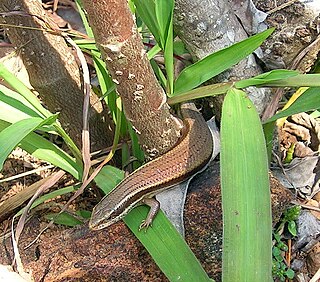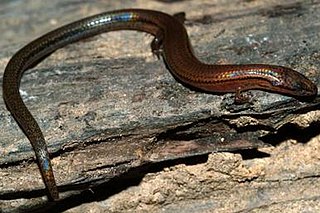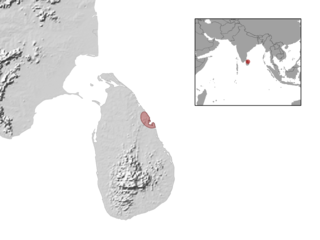
Lygosoma is a genus of lizards, commonly known as supple skinks or writhing skinks, which are members of the family Scincidae. Lygosoma is the type genus of the subfamily Lygosominae.
In the context of the Spanish colonial empire, a peninsular was a Spaniard born in Spain residing in the New World, Spanish East Indies, or Spanish Guinea. Nowadays, the word peninsulares makes reference to Peninsular Spain and in contrast to the "islanders" (isleños), from the Balearic or Canary Islands or the territories of Ceuta and Melilla.

Axel Johann Einar Lönnberg was a Swedish zoologist and conservationist. Lönnberg was born in Stockholm. He was head of the Vertebrate Department of the Naturhistoriska Riksmuseet from 1904 to 1933.

Riopa guentheri, commonly known as Günther's supple skink or Günther's writhing skink, is a species of skink, which is endemic to India.

Criollos are Latin Americans who are of solely or of mostly Spanish descent; such ancestry distinguishes them both from multi-racial Latin Americans and from Latin Americans of post-colonial European immigrant origin.

The banded supple skink, also known commonly as Harold's writhing skink or Harold Young's supple skink, is a species of skink, a lizard in the family Scincidae. The species is endemic to Southeast Asia.

The Korat supple skink or Koraten writhing skink is a species of skink in the family Scincidae. It is endemic to Thailand.

Veun Sai District is a district located in Ratanakiri Province, in north-east Cambodia. The town of Veun Sai is located in the district. It is approximately 38 km north by road of Banlung and is located on the Tonlé San River. The headquarters of Virachey National Park are located in the village. The village is populated by Khmers and many ethnic minorities including Kreung, Lao, and Chinese. Across the Tonle San river are a small Lao village and a small Chinese village.

Lygosominae is the largest subfamily of skinks in the family Scincidae. The subfamily can be divided into a number of genus groups. If the rarely used taxonomic rank of infrafamily is employed, the genus groups would be designated as such, but such a move would require a formal description according to the ICZN standards.

The short-limbed supple skink or Linnaeus's writhing skink is a species of skink which is found widely in southern China, Hong Kong, and Southeast Asia.

Lygosoma veunsaiense is a species of skink that is endemic to northeastern Cambodia. Its description as a new species was published in 2012, receiving both local and international publicity.
Richard Sternfeld was a German-Jewish herpetologist, who was responsible for describing over forty species of amphibians and reptiles, particularly from Germany's African and Pacific colonies.

Lygosoma singha is a species of skink that is endemic to the island of Sri Lanka.

Nepenthes rosea is a tropical pitcher plant known only from Krabi Province, Peninsular Thailand, where it grows at 450–520 m above sea level. It is unusual in that it sometimes produces a rosette along the peduncle.
Angel's writhing skink is a species of lizard in the family Scincidae. The species is native to Southeast Asia.
Lygosoma bampfyldei, commonly known as Bampfylde's supple skink or Bampfylde's writhing skink, is a species of lizard in the family Scincidae. The species is endemic to Malaysia.
Lygosoma siamense, the Siamese supple skink, is a species of skink found in Vietnam, Laos, Cambodia, Thailand, and Peninsular Malaysia.
The Palawan supple skink is a species of skink found in the Philippines.
Mochlus vinciguerrae, also known commonly as Vinciguerra's writhing skink, is a species of lizard in the family Scincidae. The species is indigenous to East Africa and the Horn of Africa.










